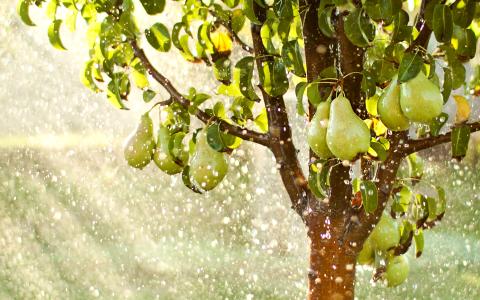by Chris Schoon, Director of Thrive-US
Imagine for a moment the giddiness of a four-year-old trying to tell you about how a butterfly paused on the very tip of their nose and looked straight into their eyes.
Or picture another child, arms spread wide, head tilted up toward the sky, mouth gaping, their tongue out as far as they can stretch it, dizzy with delight as they catch the first snowflakes of the season.
Or think of looking through a telescope and seeing for the first time the divots on Earth’s moon, the glimmering rings around Saturn, or the cluster of stars we call the Milky Way.
I, for one, find myself caught up in a sense of wonder when I slow down enough to notice the brilliant orange of a Baltimore oriole, the sweet aroma of a lilac bush after a spring rain, or the way a cacophony of “ribbiting” frogs can evolve into a symphony of forest musicians. In some of those moments, I’ll borrow the psalmist’s cry “Lord, our Lord, how majestic is your name in all the earth!” (Psalm 8:1, 9) because it seems so fitting. At other times, lingering in silent gratitude is all I can manage.
That sense of delight cascading over the brim of the present moment is at the very center of wonder. Sometimes we simply call that overflowing delight awe.
The faith practice of wonder helps us glimpse with surprise just how creative, faithful, good, big, and present God is. The awe that accompanies wonder is often jump-started with a “Wow!” that we cannot contain, leading us into a greater appreciation (and even affection) for God and the world God has made. Ultimately, wonder cultivates in us a deep and abiding trust that God will do “immeasurably more than all we ask or imagine” (Ephesians 3:20) because we continue to encounter God’s steadfast love, tenderness, and sovereignty in so many unexpected places.
Two Characteristics of Wonder
While there certainly are more dimensions to wonder, two common characteristics of wonder as a faith practice that come to mind are childlike and slow.
Childlike: A colleague remarked that the faith practice of wonder invites us into a more childlike posture than the other practices do. Practicing wonder beckons us to be surprised and excited about things that others might not notice or care about. Children have a way of becoming curiously attentive to sounds and aromas, to colors and shapes, and to movement—even subtle, small movements that adults often overlook or dismiss.
Perhaps it was this childlike characteristic that led Jesus to illustrate what life in the kingdom of God is like by pointing out mustard seeds, buried treasure, and a dad running toward his son.
I wonder what signs of God’s faithfulness, majesty, or creativity we might glimpse if we approached the world with a childlike willingness and desire to be surprised by what God shows us. I also wonder, in imitation of a child, whom we would show and tell about what we had just encountered.
Slow: I recall stretching out with family members on a dock on the west end of Lake Nipissing (Ontario) early one August a few years ago. It was dark, shortly after midnight, with virtually no light pollution. We could see so many stars! As we lay there, we saw shooting stars streak across the sky. I felt a sense of wonder upon wonder as light and dark, the magnitude of space, the friction with Earth’s atmosphere, and the gentle lapping of the lake against the dock mingled together. Okay, the buzzing and biting of mosquitoes was a bit annoying, but you get the idea.
Yet this idyllic moment of noticing beautiful ways that God has knit creation together didn’t “just happen.” We made a commitment to step out of our ordinary routines, to let go of our need to be productive and efficient, and to be still. And those elements of slowing down didn’t require us to go anywhere or pay extra money.
Slowing down is essential to practices of wonder. It helps us give our attention to things we might ordinarily overlook or discount because they don’t address our immediate and pressing responsibilities. This slowness is not only for when times are good; it’s important in the tumultuous spaces of our lives as well. As Psalm 46 beckons us: “Be still, and know that I am God.”
Invitation to Wonder
Though we cannot magically produce wonder with the “right” combination of ingredients, we can train ourselves to be more attentive. As we develop ways of engaging our world through wonder, we learn to leave room to be surprised and excited about who God is through what we encounter.
As you imagine putting wonder into practice within the context of your home, small group, or church, we invite you to check out the curated wonder resources in the Faith Practices Project. These resources are designed to help you imagine different, practical ways of noticing and responding to God’s creativity, faithfulness, goodness, grandeur, and presence around us.

